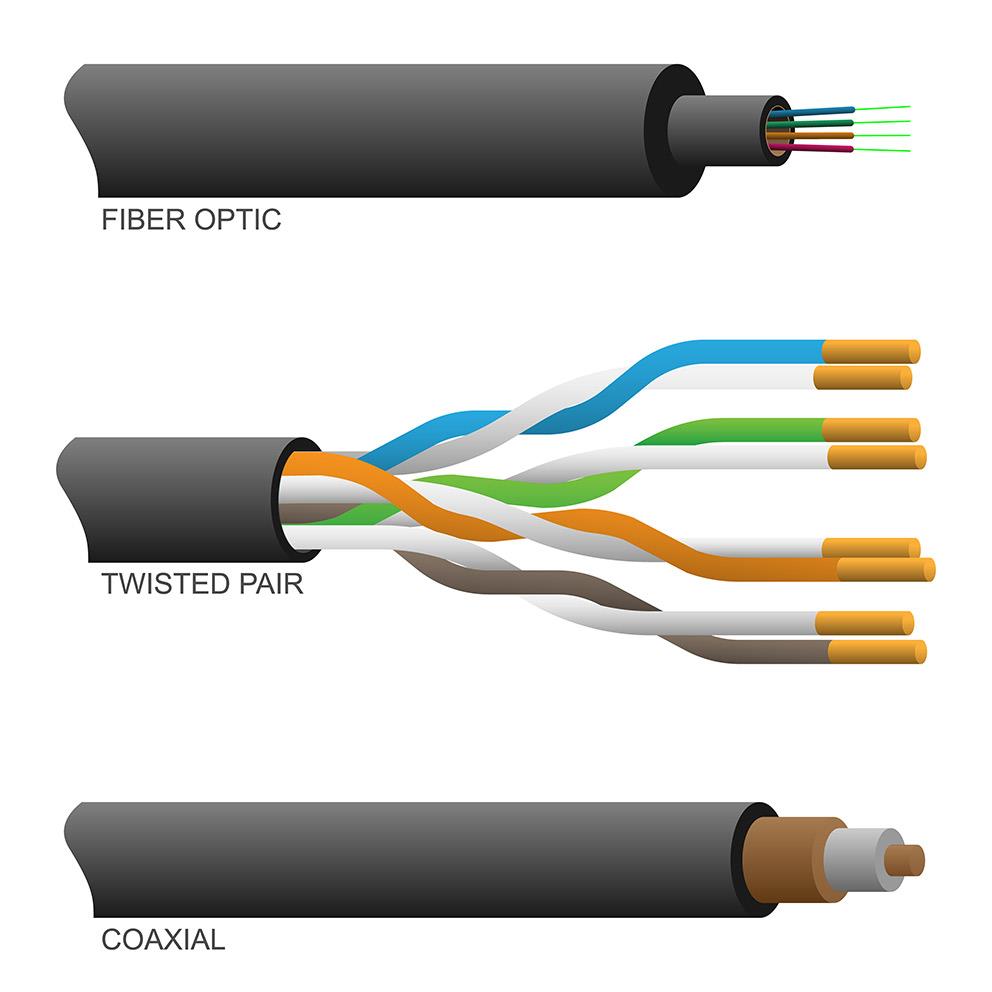
The Internet can be delivered by different means, but the type of delivery directly affects the speed. There are three types of internet cable: twisted-pair, coaxial (coax) and fiber-optic, but the two main types are the latter. So what’s the difference between fiber vs. coax, and which is better?
What is Fiber?
Fiber, otherwise known as fiber-optic cable, contains thin glass fibers which carry and transmit data. Fiber is delivered through light, is exceptionally powerful, and can instantly transfer large amounts of data. This use of light allows fiber cable to offer a substantially higher bandwidth over coaxial (coax) cable. As a result, fiber allows for a constant high-speed internet connection without a lag or slow down. Let’s learn more to delve into fiber vs. coax in more detail.
What is Coax?
Coaxial cable, also known as coax, primarily uses copper and relies on electricity to carry and transmit data. While coax is typically better than other internet delivery methods, it’s no match for fiber’s near-instant speeds. With coax, a home is usually connected to the provider’s main network via a modem. Coax service is typically delivered using a shared connection. The bandwidth on that connection is distributed among all the customers, such as those within a neighborhood. Now that we’ve highlighted the difference between fiber vs. coax let’s see how that translates to real life.
Fiber vs. Coax
With fiber, homes can get up to a Gig or more. But what does that mean? It means you could download an HD movie in a mere six seconds, an online game in 20 seconds and nearly 1,000 photos in two seconds!
When looking at what internet speed you need, evaluate your internet usage and habits, including how many devices you use at home and the number that is used simultaneously, pulling bandwidth and decreasing speed.
In comparison, coax can’t compete with fiber speeds, especially since coax is a shared connection. When people in the “assigned group” of coax are all online simultaneously, it can significantly reduce the speed due to the amount of internet traffic.
Other Considerations for Fiber vs. Coax
There are many other reasons why fiber reigns supreme when it comes to fiber vs. coax. Below are several examples.
- Increased Property Values – Homes that have fiber internet see a positive impact on property values. The Fiber Broadband Association highlighted a study showing that fiber internet can boost home values by up to 3.1 percent.
- Reliability – Compared to coax, fiber internet sees fewer outages and disruptions during poor weather conditions.
- Security – Fiber internet provides more protection than coax, as the only way to penetrate fiber is to break it.
- Sustainability – Fiber internet is the future, and its advanced capabilities can handle numerous devices and technologies. Experts predict that the demand for data will only increase in the future, and fiber can easily meet these growing demands.
Home Telecom Offers Superior Fiber Internet Services
If you’re interested in boosting your internet speeds, check and see if Home Telecom offers fiber internet services in your area. If you aren’t sure what internet speed you need, take our easy test that helps determine what speed you need based on your number of connected devices. If fiber internet isn’t available in your neighborhood, learn more about how Home Telecom is expanding fiber access in Berkeley, Charleston and Dorchester counties.
